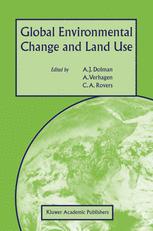

Most ebook files are in PDF format, so you can easily read them using various software such as Foxit Reader or directly on the Google Chrome browser.
Some ebook files are released by publishers in other formats such as .awz, .mobi, .epub, .fb2, etc. You may need to install specific software to read these formats on mobile/PC, such as Calibre.
Please read the tutorial at this link: https://ebookbell.com/faq
We offer FREE conversion to the popular formats you request; however, this may take some time. Therefore, right after payment, please email us, and we will try to provide the service as quickly as possible.
For some exceptional file formats or broken links (if any), please refrain from opening any disputes. Instead, email us first, and we will try to assist within a maximum of 6 hours.
EbookBell Team

4.0
86 reviewsThe interaction between environmental change and human activities is com plex, requiring the concepts and tools of a number of disciplines for its effective analysis. Land-use and land-cover change has only recently become a topic susceptible to scientific research, as these concepts and tools have been devel oped and made available. Rooted in a broad community concemed with global change, systematic research has begun into land-use systems at different scales and interactions, and their links with global cyc1es of water, nitrogen and carbon are being explored. Partly based on research initiated by the Dutch National Research Programme on Global Air PolIution and Climate Change (NRP), this book touches upon various land-use and land-cover issues in relation to global environmental change. In addition to the biogeochemical cyc1es, land as a car rier for functions of economic activities, food and fibre production and energy production via biomass are discussed. Crucial in studying land use is human behaviour and man-environment interaction at different scales. Land-use and land-cover change is an important contrlbutor of greenhouse gasses as these activities directly interfere with the carbon, nitrogen and water cyc1es. These cyc1es are connected through numerous feedback loops. The interface of land-use and c1imate is essentially determined by the interaction of man and the environment. Man uses land primarily to produce food; a relatively small area is needed for urban development.